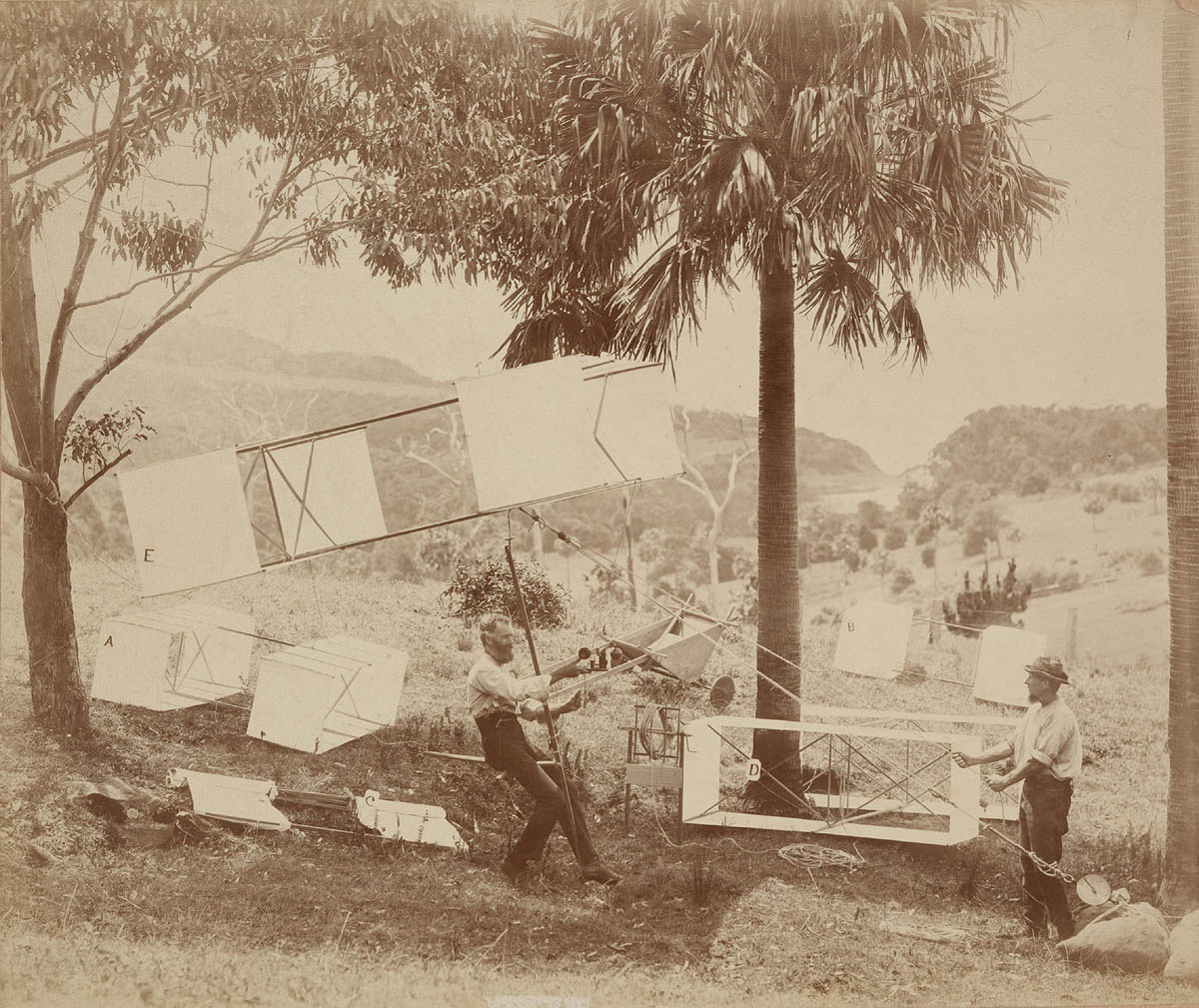1894: Lawrence Hargrave lifts off in his box kite at Stanwell Park.
In 1894, almost a decade before the Wright brothers celebrated the first powered flight, Australian inventor Lawrence Hargrave connected four box kites of his own design, added a seat, and flew 4.8m off the ground, proving it was possible to build a safe, heavier-than-air flying machine.
At the observatory, Hargrave designed and built adding machines to assist his astronomical calculations.
The area is well known for its winds favourable for gliding, and on the morning of 12 November 1894, Hargrave launched a linked series of four box kites off the town beach and climbed into a seat attached to the lowest kite.
Hargrave’s designs were taken up by other inventors, including the French-American Octave Chanute, whose designs were later incorporated by the Wright brothers into their Wright Flyer, which, in December 1903, became the first aircraft to achieve powered flight with a pilot on board.
Weeks later, on 6 July, Hargrave died of peritonitis following surgery in Sydney, aged 65.
This is the best summary I could come up with:
In 1894, almost a decade before the Wright brothers celebrated the first powered flight, Australian inventor Lawrence Hargrave connected four box kites of his own design, added a seat, and flew 4.8m off the ground, proving it was possible to build a safe, heavier-than-air flying machine.
His father, lawyer John Fletcher Hargrave, moved to New South Wales in 1857, and by 1865 secured a place on the Supreme Court bench.
Later that year, young Lawrence also emigrated with his mother and siblings, and soon after arriving in Sydney joined the schooner Ellesmere as assistant to expedition leader Abraham Thompson on an exploratory circumnavigation of Australia.
By 1883, Hargrave was enjoying an independent annual income of about £1000 due to his father’s land investments, which allowed him to fully commit to scientific research.
A strong gust propelled him into the air, but the kites remained steady in the buffeting winds because of their box design.
Having proven human flight on a stable, multi‑winged craft was possible, he wrote, “The particular steps gained are the demonstration that an extremely simple apparatus can be made, carried about, and flown by one man…without any risk of accident.”
I’m a bot and I’m open source!



